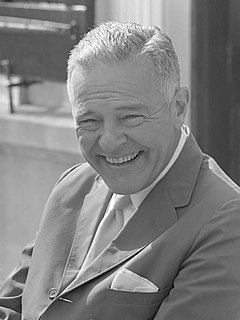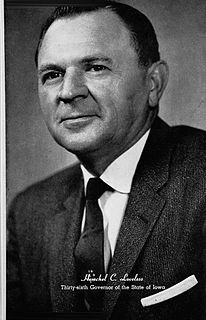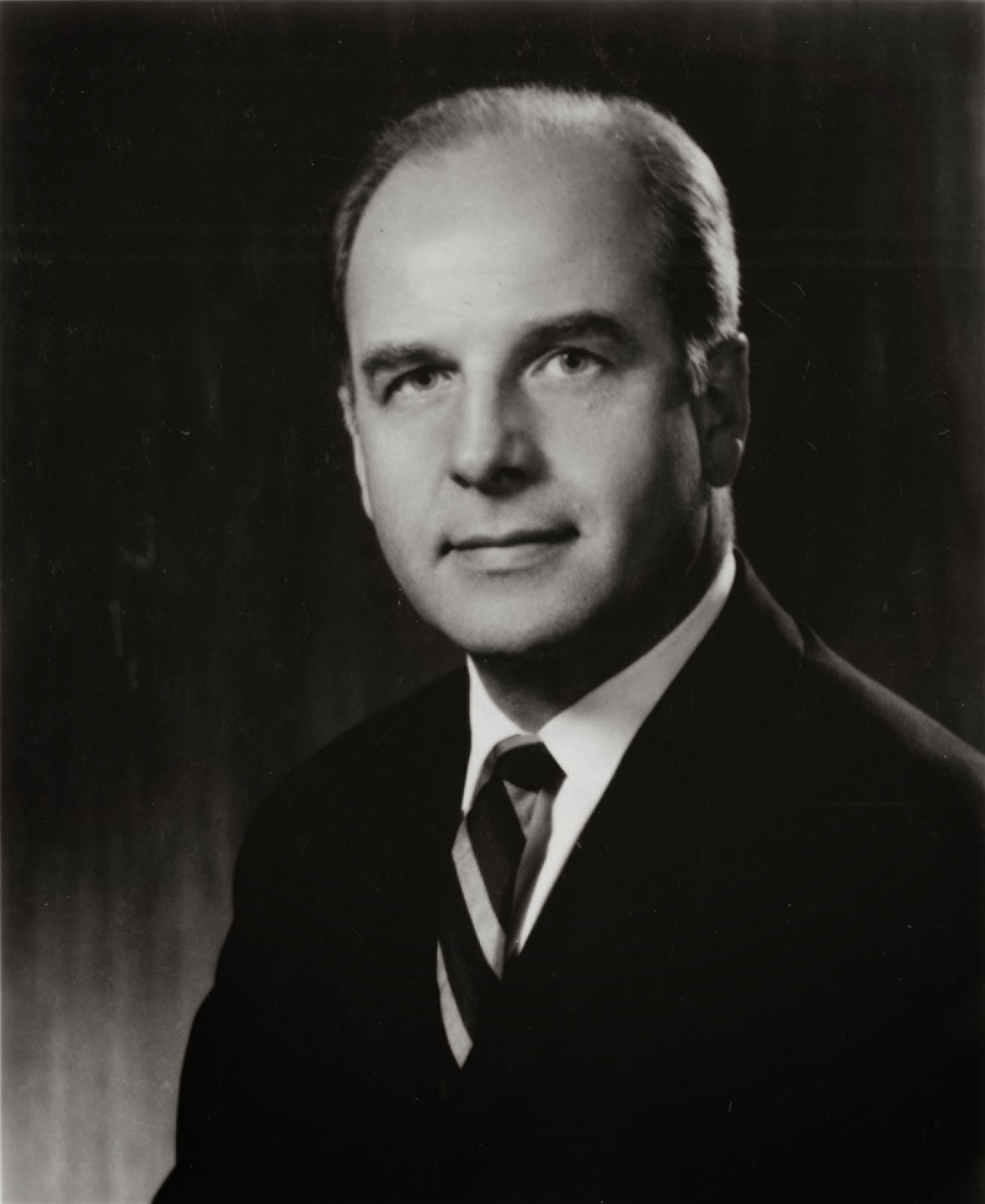
The 1964 United States presidential election was the 45th quadrennial American presidential election. It was held on Tuesday, November 3, 1964. Incumbent Democratic President Lyndon B. Johnson defeated Barry Goldwater, the Republican nominee. With 61.1% of the popular vote, Johnson won the largest share of the popular vote of any candidate since the largely uncontested 1820 election.

Walter Frederick "Fritz" Mondale is an American politician, diplomat and lawyer who served as the 42nd vice president of the United States from 1977 to 1981. A United States senator from Minnesota (1964–1976), he was the Democratic Party's nominee in the United States presidential election of 1984, but lost to Ronald Reagan in an Electoral College landslide. Reagan won 49 states while Mondale carried his home state of Minnesota and District of Columbia. He became the oldest-living former U.S. vice president after the death of George H. W. Bush in 2018.
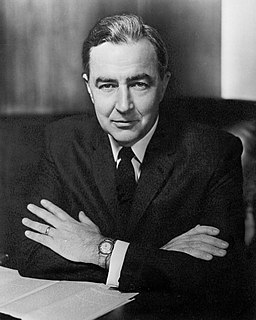
Eugene Joseph McCarthy was an American politician and poet from Minnesota. He served in the United States House of Representatives from 1949 to 1959 and the United States Senate from 1959 to 1971. McCarthy sought the Democratic nomination in the 1968 presidential election, challenging incumbent Lyndon B. Johnson on an anti-Vietnam War platform. McCarthy sought the presidency five times, but never won.
Veepstakes describes the quadrennial process in which candidates for President of the United States select a running mate. If the ticket wins, the running mate becomes the Vice President of the United States and first in line to the presidency.

The 1964 United States Senate elections coincided with the election of President Lyndon B. Johnson by an overwhelming majority, to a full term. His Democratic Party picked up a net two seats from the Republicans. As of 2019, this is the last time either party has had a two-thirds majority in the Senate, which would have hypothetically allowed the Senate Democrats to override a veto, convict and expel certain officials, or invoke cloture without any votes from Republicans. The Senate election coincided with Democratic gains in the House in the same year.

The 1968 National Convention of the Republican Party of the United States was held at the Miami Beach Convention Center in Miami Beach, Dade County, Florida, from August 5 to August 8, 1968, to select the party's nominee in the general election. It nominated former Vice President Richard M. Nixon for President and Maryland Governor Spiro T. Agnew for Vice President. It was the fourth time Nixon had been nominated on the Republican ticket as either its vice-presidential or presidential candidate (1960).

The 1964 Democratic National Convention of the Democratic Party, took place at Boardwalk Hall in Atlantic City, New Jersey from August 24 to 27, 1964. President Lyndon B. Johnson was nominated for a full term. Senator Hubert H. Humphrey of Minnesota was nominated for Vice President.

Lyndon Baines Johnson Day is a legal state holiday in Texas. It falls every year on August 27, to mark the birthday of U.S. President Lyndon Baines Johnson.
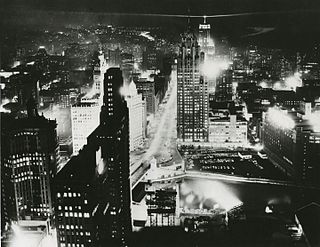
The 1956 Democratic National Convention nominated former Governor Adlai Stevenson of Illinois for President and Senator Estes Kefauver of Tennessee for Vice President. It was held in the International Amphitheatre on the South Side of Chicago, Illinois August 13–August 17, 1956. Unsuccessful candidates for the presidential nomination included Governor W. Averell Harriman of New York, Senator Lyndon B. Johnson of Texas, and Senator Stuart Symington of Missouri.

The 1960 National Convention of the Republican Party of the United States was held in Chicago, Illinois, from July 25 to July 28, 1960, at the International Amphitheatre. It was the 14th and most recent time overall that Chicago hosted the Republican National Convention, more times than any other city.

The 1944 Democratic National Convention was held at the Chicago Stadium in Chicago, Illinois from July 19 to July 21, 1944. The convention resulted in the nomination of President Franklin D. Roosevelt for an unprecedented fourth term. Senator Harry S. Truman of Missouri was nominated for Vice President. Including Roosevelt's nomination for the vice-presidency in 1920, it was the fifth time Roosevelt had been nominated on a national ticket. The keynote address was given by Governor Robert S. Kerr of Oklahoma, in which he "gave tribute to Roosevelt's war leadership and new deal policies."

The 1960 Democratic presidential primaries were the selection process by which voters of the Democratic Party chose its nominee for President of the United States in the 1960 U.S. presidential election. Senator John F. Kennedy of Massachusetts was selected as the nominee through a series of primary elections and caucuses culminating in the 1960 Democratic National Convention held from July 11 to July 15, 1960, in Los Angeles, California.
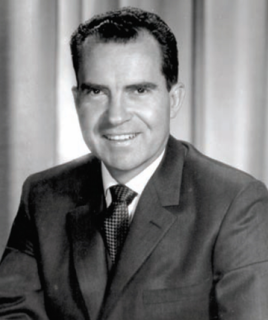
The 1960 United States presidential election in New Hampshire took place on November 8, 1960, as part of the 1960 United States presidential election, which was held throughout all 50 states. Voters chose four representatives, or electors to the Electoral College, who voted for president and vice president.

This article lists those who were potential candidates for the Democratic nomination for Vice President of the United States in the 1964 election. After the assassination of Democratic President John F. Kennedy in 1963, Vice President Lyndon B. Johnson ascended to the presidency. As the 25th Amendment had not yet been passed, there was no process for filling the office of vice president until the next election, and Speaker of the House John William McCormack was next-in-line for the presidency from November 1963 to January 1965. Johnson carefully considered his running mate for the 1964 election, and put up "trial balloons" in the media about possible running mates. Among those speculated at the time were Connecticut Senators Abraham Ribicoff and Thomas J. Dodd, Secretary of Defense Robert McNamara, New York Mayor Robert Wagner, California Governor Pat Brown, and Minnesota Senators Hubert Humphrey and Eugene McCarthy. Many Democrats also hoped for Attorney General Robert F. Kennedy, the brother of former President John F. Kennedy, but Johnson carefully maneuvered to keep Kennedy off the ticket due to personal enmity between the two. After an interview in the Oval Office, Johnson announced his choice of Humphrey, who provided geographic balance to the ticket and had been a key lieutenant for Johnson in the Senate, particularly in regards to the 1964 Civil Rights Act. Humphrey then easily won the vice presidential nomination on the first ballot at the 1964 Democratic National Convention. The Johnson-Humphrey ticket went on to beat the Goldwater-Miller ticket in the 1964 election. Humphrey later won the 1968 Democratic presidential nomination over McCarthy, but lost the election to Richard Nixon.
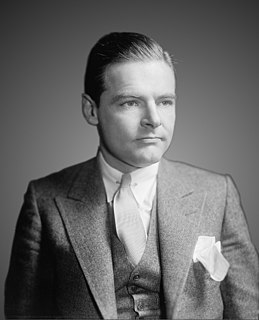
This article lists those who were potential candidates for the Republican nomination for Vice President of the United States in the 1960 election. After winning the Republican presidential nomination at the 1960 Republican National Convention, Vice President Richard Nixon needed to choose a running mate. President Dwight D. Eisenhower strongly supported UN Ambassador Henry Cabot Lodge Jr.. Though Lodge lacked charisma as a campaigner, his foreign policy experience and stature as ambassador made him an appealing candidate. However, Lodge was unpopular with the Republican right, who did not want a Northeastern moderate on the ticket. Nixon also strongly considered conservative Minnesota Representative Walter Judd and moderate Kentucky Senator Thruston Morton. After a closed session with Republican Party leaders, Nixon announced his choice of Lodge. The Republican convention ratified Nixon's choice of Lodge. The Nixon-Lodge ticket lost the 1960 election to the Democratic ticket of John F. Kennedy and Lyndon B. Johnson.

This article lists those who were potential candidates for the Republican nomination for Vice President of the United States in the 1952 election. After defeating Ohio Senator Robert A. Taft for the Republican presidential nomination at the 1952 Republican National Convention, General Dwight D. Eisenhower needed to choose a running mate. Taft recommended Illinois Senator Everett Dirksen, but Eisenhower rejected the suggestion. Eisenhower and his advisers put together a list of prominent Republicans who were acceptable to both the conservative Taft and liberal Dewey wings of the party, anti-Communist, talented at campaigning, relatively young, and who contributed to Eisenhower's nomination victory. After conferring with Republican Party leaders, Eisenhower decided to ask California Senator Richard Nixon to be his running mate; Nixon accepted the offer. Nixon had carefully campaigned for the post of vice president since meeting Eisenhower in 1951, and Nixon helped deliver the California delegation to Eisenhower in the presidential ballot. The Republican convention ratified Eisenhower's choice of Nixon. Months after the convention, Eisenhower considered asking Nixon to step down as running mate due to controversy surrounding campaign expenses, but Nixon rallied public opinion with his Checkers speech and remained on the ticket. The Eisenhower-Nixon ticket won the 1952 election, as well as the 1956 election, defeating the Stevenson-Sparkman and Stevenson-Kefauver tickets, respectively.
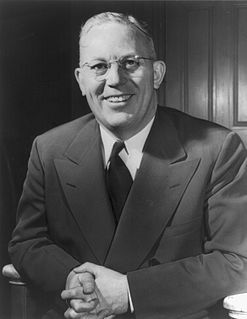
This article lists those who were potential candidates for the Republican nomination for Vice President of the United States in the 1948 election. After New York Governor Thomas Dewey secured the Republican presidential nomination on the third ballot of the 1948 Republican National Convention, the convention needed to choose Dewey's running mate. Dewey and several party leaders discussed Dewey's running mate during the evening of June 24. House Majority Leader Charles A. Halleck and former Minnesota Governor Harold Stassen were both considered, but Dewey ultimately decided to ask California Governor Earl Warren to serve as his running mate. Warren had earlier said that he would not accept the position, and asked for time to consider the offer. In the meantime, Stassen was asked to serve as running mate if Warren declined. However, Dewey convinced the reluctant Warren to join his ticket. Halleck alleged that he had been promised the vice presidency in exchange for supporting Dewey, but Halleck's isolationism convinced Dewey and others to pass him over. The Dewey-Warren ticket was well-received by the press, as it combined the youthful, popular governors of two of the three most populous states in the nation. Despite being favored by most, the Dewey-Warren ticket lost the 1948 election to the Democratic Harry S. Truman-Alben W. Barkley ticket. In 1953, Warren was appointed Chief Justice of the United States by President Dwight D. Eisenhower.

The 1960 United States presidential election in Connecticut took place on November 8, 1960, as part of the 1960 United States presidential election, which was held throughout all 50 states. Voters chose eight representatives, or electors to the Electoral College, who voted for president and vice president.




